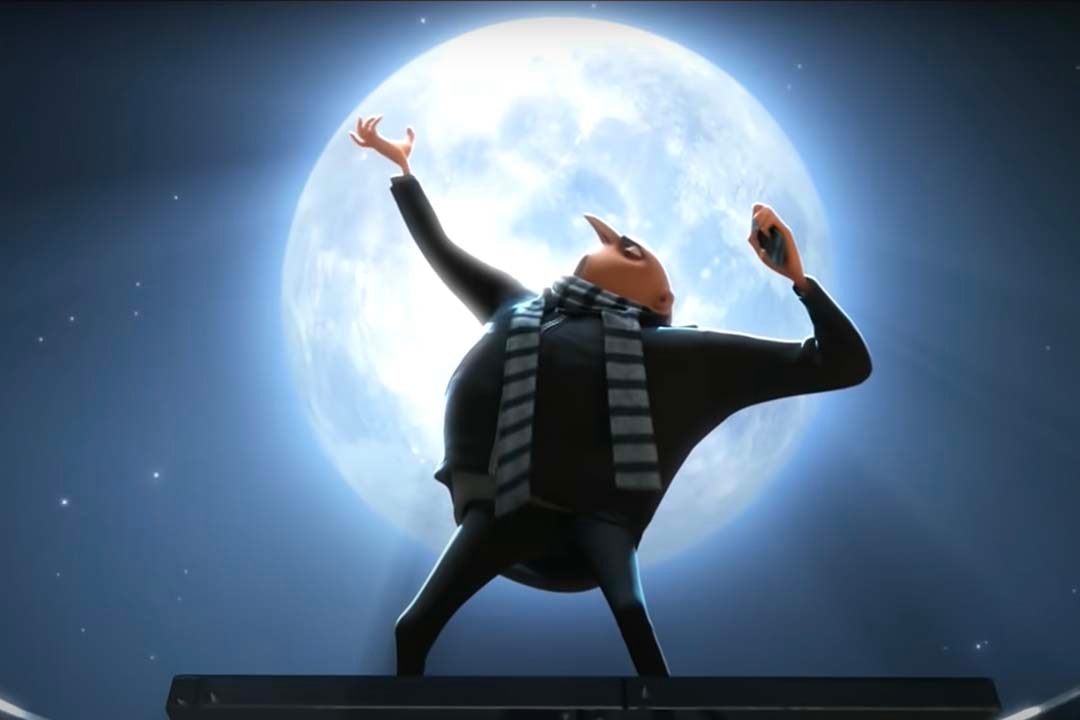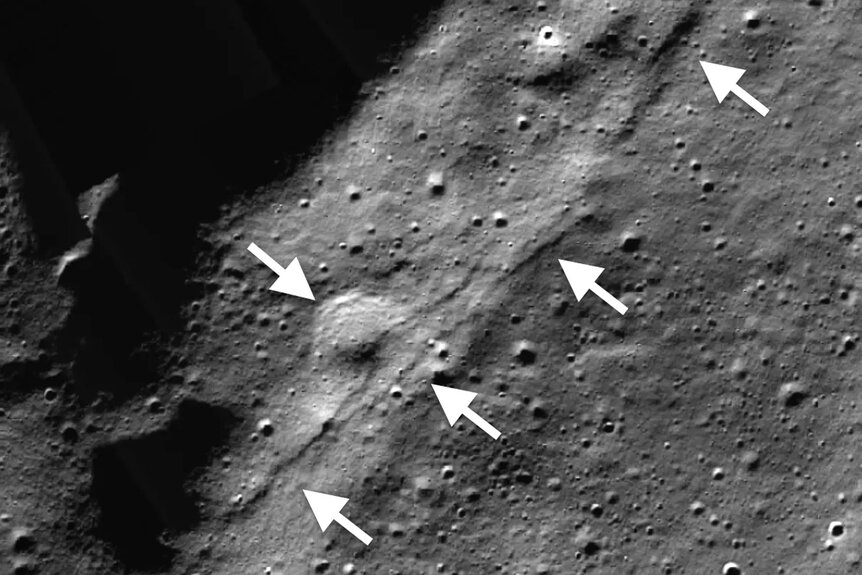The Moon Is Shrinking, Triggering Fault Lines and Moonquakes
Gaze upon the incredible shrinking Moon!

Sometimes new information makes you change your entire trajectory. In the 2010 animated film Despicable Me (streaming now on Peacock), career supervillain Gru (Steve Carell) makes one of the hardest left turns in movie history when he shifts from a life of crime to a life of tea parties and slumber parties. But after Gru is embarrassed by his long-term nemesis, he cooks up a plan to reclaim the crown of crime by stealing the Moon.
The question is: Where do you hide something that big? And how do you even get your hands on it? The answer, for Gru at least, is a shrink ray pilfered from a research station. With it, Gru shrinks the Earth’s only natural satellite into something more pocket-sized. It turns out, however, that Gru didn’t need a shrink ray after all, he just needed patience.
The Moon Is Shrinking All on Its Own, Causing Moonquakes and Landslides
A recent NASA-funded study, relying heavily on images from the Lunar Reconnaissance Orbiter (LRO), revealed freshly formed fault lines traced across the lunar surface. Seismological instruments on the Moon’s surface confirmed that those fault lines correspond with moonquakes which could threaten future landing missions. And it’s all happening because the Moon is shrinking.
The images captured by the Lunar Reconnaissance Orbiter Camera (LROC) show thousands of geologically young cracks known as thrust faults almost everywhere scientists looked. The faults look like tiny cliffs and are caused by one part of the lunar surface being pushed up and over another. A combination of tidal forces from the Earth and the gradual cooling of the Moon’s core is causing it to contract, and as that happens, pieces of the surface are thrust toward one another. Faults form where two pieces mash together and settle into a new configuration.
For More on the Moon:
NASA Laser Hit an Oreo-Sized Mirror on the Moon from Orbit
Why NASA Is Postponing Its Next Crewed Moon Missions
Scientists Want to Melt the Moon to Make Lunar Roads
Much like on the Earth, the reorganization of the surface and subsurface triggers quakes, which were picked up by the Apollo Passive Seismic Network, a collection of seismometers left on the lunar surface by Apollo astronauts half a century ago. Quakes have been detected all over the Moon, but some of the strongest are happening on the Moon’s South Pole, the target destination of NASA’s Artemis program. And the quakes are only the beginning. The study authors modeled lunar seismic activity and found that certain areas in the South Pole are susceptible to landslides, potentially impacting the planned crewed landing of Artemis III.
“To better understand the seismic hazard posed to future human activities on the Moon, we need new seismic data, not just at the South Pole, but globally,” said Renee Weber, a co-author of the study, in a statement. “Missions like the upcoming Farside Seismic Suite will expand upon measurements made during Apollo and add to our knowledge of global seismicity.”
RELATED: Russia's Luna-25 Moon Lander Lost Contact, Crashed into the Moon
The Farside Seismic Suite (FSS) is composed of two seismometers similar to the one sent to Mars on the InSight lander. The FSS will launch as a self-sustaining NASA payload aboard a commercial lander sometime in 2025. The mission is part of NASA’s Commercial Lunar Payload Services (CLPS) program and is aiming for Schrödinger Crater on the Moon’s far side.
It will add two additional seismic stations to the Moon, not to mention 50 years' worth of improved technology and understanding. Considering how much information we’re still getting out of the Passive Seismic Network, it’s likely that FSS will continue revealing new information from the Moon for decades to come. There’s nothing we can do about our shrinking Moon, but a better understanding of what’s going on could protect lunar astronauts when they return to the Moon in the coming years.
There’s no need to worry that the Moon is going to vanish into itself. It has only shrunk about 50 meters (150 feet) over the last few hundred million years, according to NASA. We’re guessing Gru didn’t have that kind of time to wait around, so maybe the shrink ray was the right idea.
Catch Despicable Me (and the Moon) streaming now on Peacock.



























